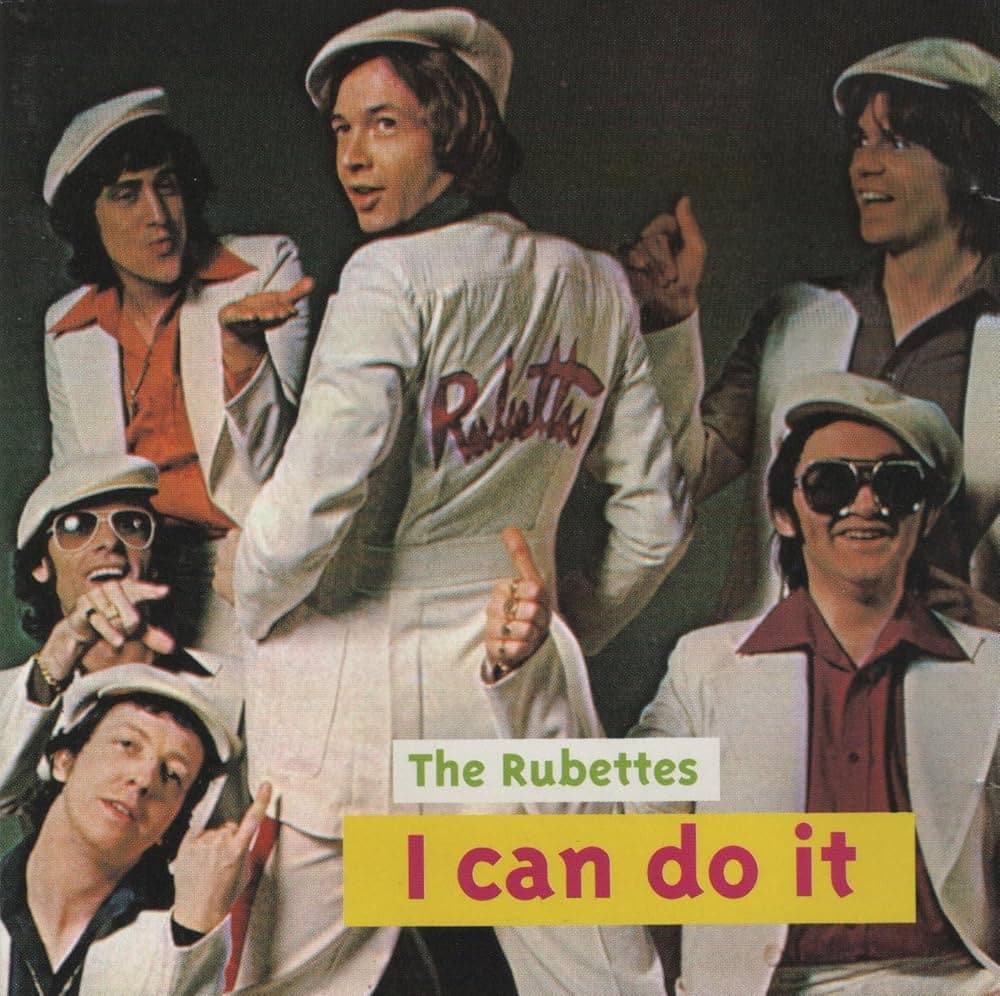
Roll the Dice and Rock the Jive: The Unapologetic Confidence of Glam Pop
The mid-1970s. What a glorious, wonderfully silly time it was for pop music! The aftermath of the original Glam explosion had settled, leaving a trail of glitter and an insatiable appetite for simple, infectious, theatrical hits. And few bands encapsulated that moment better than The Rubettes, instantly recognizable by their matching white suits and distinctive, wide-brimmed caps—a look that managed to be both retro and aggressively contemporary. They were pure, unadulterated bubblegum glam, and while they will forever be best known for the falsetto flash of “Sugar Baby Love,” their follow-up singles proved they were far from one-hit wonders. Among the most memorable of these later hits is “I Can Do It,” a track that fully commits to the group’s cheeky, rock ‘n’ roll revivalist aesthetic.
This song, “I Can Do It,” was released as the fourth single by The Rubettes in March 1975, and it successfully proved their commercial staying power. It reached a solid peak position of No. 7 on the UK Official Singles Chart, making it the band’s third UK Top 10 hit out of their first four releases. It was the second single taken from their album, also confidently titled We Can Do It. Significantly, this track holds a small piece of pop history: it was the very first single released on State Records, the label newly set up by the prolific songwriting and production duo, Wayne Bickerton and Tony Waddington. For those of us who collected singles back then, the catalogue number STAT 1 on the label was a sign that this team was doubling down on the success they’d created, moving into self-sufficiency—and with “I Can Do It,” they certainly started strong. The song wasn’t just a UK hit, proving its irresistible charm across Europe, hitting No. 5 in Belgium and No. 2 in France, firmly cementing The Rubettes’ status as a continental pop sensation.
The story behind “I Can Do It” is woven right into the lyrics, telling a straightforward, instantly relatable tale of personal transformation and blossoming confidence. It speaks of a time when the protagonist was young, awkward, and “too young to date, too old to wait,” struggling on the dance floor and without a girlfriend to guide him. The core of the song is the joyous realization that he has finally cracked the code. He’s learned the moves—the jive, the stroll, the essence of rock ‘n’ roll—and he can now proclaim, with absolute, strutting conviction, “I Can Do It!” The song’s meaning is a celebration of self-mastery, finding one’s feet, and the thrilling power of feeling competent and attractive. It perfectly encapsulated the spirit of the time, where the retro fashions and dances of the 50s were being celebrated through a 70s Glam lens.
The musical arrangement is a masterpiece of the era’s production style. It features a driving, almost boogie-rock piano riff, a punchy horn section, and the unmistakable, slightly processed sound that gave 70s Glam its swagger. Lead vocalist Alan Williams delivers the lyrics with a perfect blend of cocky assurance and wide-eyed excitement, capturing that moment when teenage shyness evaporates and genuine, physical confidence takes over. For older readers, the song is a direct line back to the school discos and youth club halls of the 70s, recalling the sheer, exhilarating relief of finally mastering a dance move or plucking up the courage to ask someone special to dance. It’s an infectious slice of pop history that, years later, still makes you want to straighten your back, adjust your cap (real or imagined), and declare with a smile: “Yeah, I can do it!”